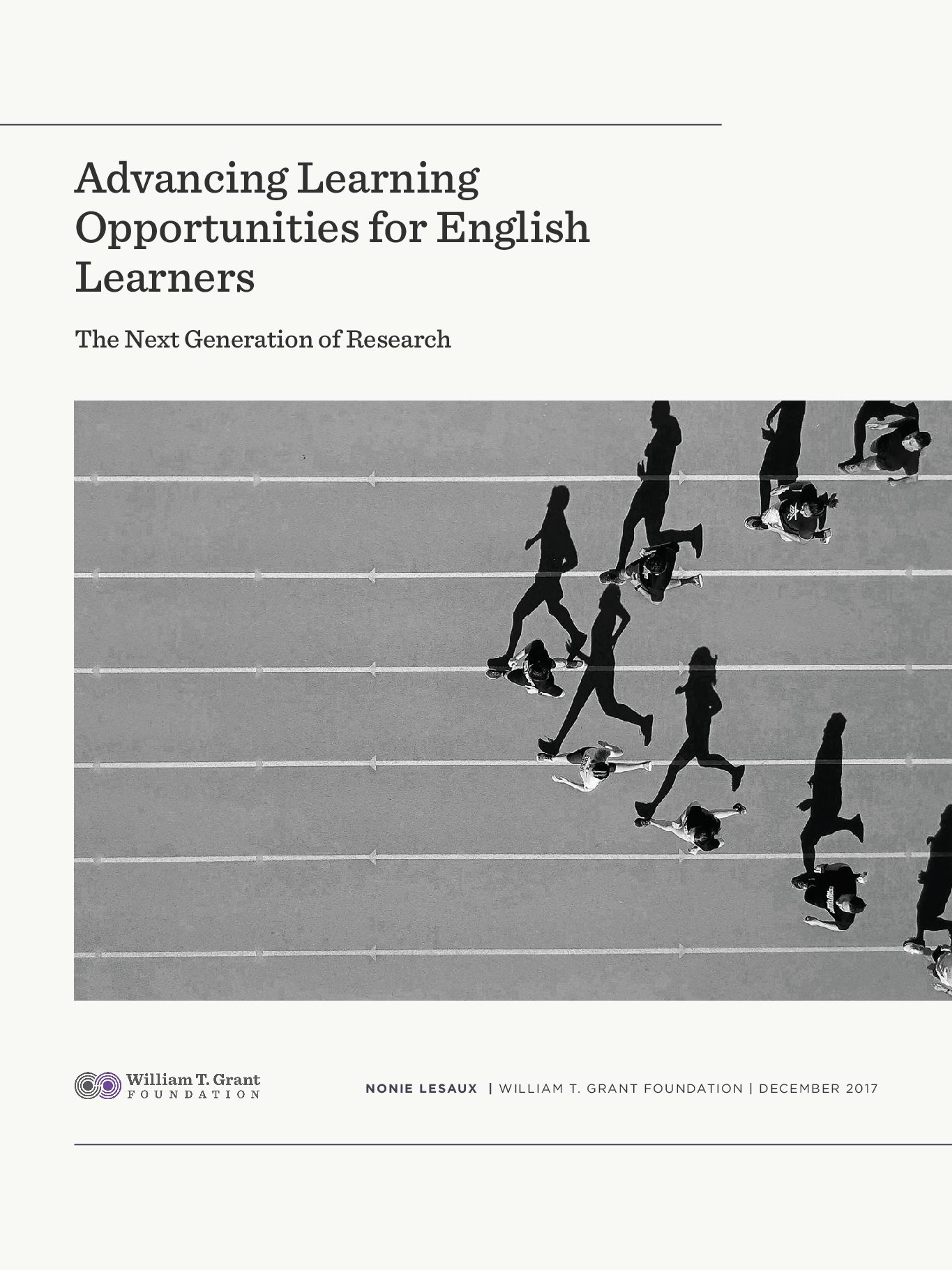When we think about advancing learning opportunities for English Learners (ELs) and the implications for a research agenda to inform this effort, we can look to literacy as a case example. Among today’s ELs, we see a mismatch between the modal reader profile and the instruction this learner receives. Therefore, to achieve genuine, scalable progress for this population and many of their peers, we must look to a different literacy-learning environment for this population—and getting there means addressing a set of key research questions.
Before outlining these questions, it is important to highlight that one of the major oversights in the conceptualization of reading (i.e., how reading is thought of and talked about) and its instruction is the language-knowledge connection. That is, when we think of reading and its instruction, the traditional focus has been on skill-based competencies—those that support students to master the mechanics of reading (Chall, Jacobs, & Baldwin, 1990; Hillman, 2003). But when it comes to strong reading, these skills, such as understanding the sounds that the letters make and being able to put these together to read the words on the page, are only half of the picture. Knowledge-based competencies, such as well-developed vocabulary and understanding of how words work, are equally necessary for reading success (Anderson & Freebody, 1983; Catts, Hogan, & Adlof, 2005; Snow & Kim, 2007; Snow, 2002; Vellutino, 2007). And when we zero in on these knowledge-based competencies, we find that language and knowledge are two sides of the same coin—ideas and concepts can’t be separated from the language used to represent them. In other words, we can’t access or build understanding of complex ideas without complex language. Language is, in many ways, the foundation for teaching and building content.
Language is, in many ways, the foundation for teaching and building content.
What’s clear from much research over the last decade is that many ELs acquire age-appropriate skills-based competencies, but they lag well behind their peers in the domain of knowledge-based competencies. As a result, while they have the skills needed to read the words on the page in the early grades, they often cannot readily handle the language and knowledge demands of the texts that come with increasing years of schooling, especially during middle and high school (Snow, 2002; Vellutino, 2007). Their academic language—the language of the curriculum—and their background knowledge is not sufficiently developed in light of the content on the printed page (Lesaux, Crosson, Kieffer, & Pierce, 2010). And yet, these increased reading comprehension demands come at the same time that a significant part of the curriculum is delivered through independent reading.
Instruction for ELs has tended to teach language “in isolation from” content learning, focusing primarily on building up conversational and basic language (Van Lier & Walqui, 2012). However, the data is clear that if we are to equip ELs—and many of their peers—with the linguistic tools needed to both build and express their content knowledge, then it stands that reading, writing, and speaking must be taught in a content-rich classroom characterized by intensive language-learning opportunities. In other words, we must think about EL support as instruction that builds language and content simultaneously, and focuses much more on academic language than the everyday language that they are likely to attain with everyday exposure.
That the language-knowledge connection needs to become a central design principle of the instructional model is a relatively straightforward conjecture, on its face; it’s almost intuitive to think about building language and content knowledge among this large, growing population. But in fact, accomplishing this goal means a transformation of the conditions in many classrooms—e.g., using extended discussion as a primary means for learning, using text in different ways, and a tight link between reading and writing—and one that is not readily informed by research. That is, getting to this language- and knowledge-building learning environment at scale demands answers to a host of research questions, including those about how to transform the modal language-learning environment.
Building language and content knowledge among English learners means a transformation of the conditions in many classrooms.
From observational studies conducted in early childhood settings and through middle school classrooms, there are two rather robust findings: first, that teachers do most of the talking in classrooms, and therefore that students need many more opportunities to produce oral and written language to support strong reading skills (Cazden, 1998; Snow, Tabors, & Dickinson, 2001); and, second, that there is great variation in the characteristics of teachers’ speech, and that in some classrooms, teachers’ speech can have effects on the growth in students’ reading achievement over the course of an academic year that is comparable to the effects found in intervention studies (Gamez & Lesaux, 2012, 2015; Jacoby & Lesaux, 2017; Martin, 1997). That said, in many respects, documenting the features of these that may be levers is the easier part. The larger challenge is that there are many questions about how to get to the classroom conditions that will create the language-learning environment, replete with high-quality interactions among and between teachers and students, that leads to acceleration in academic language and reading comprehension.

At a foundational level, there are a number of avenues to explore: What kinds of prompts and questions elicit the critical thinking and language production that leads to accelerated growth in academic language and reading comprehension? Does this response vary by English proficiency level? How does classroom composition of ELs and English-only speakers, and at what levels of academic language, influence the effects of these strategies? How do the answers to these questions vary by developmental stage/grade?
At the level of the interactions, because of technological constraints, the extant research has focused on teacher talk; however, new technologies afford the opportunity to capture teacher–student talk and student–student talk more reliably and efficiently, and thus crucial questions can be addressed: Which types of exchanges are associated with accelerated academic vocabulary and reading comprehension growth? What are the instructional moves and strategies that teach argumentation and debate most effectively? What are the types of instructional strategies and lessons that lead to high-quality, extended conversations among teachers and students?
Finally, at the level of building capacity among teachers: What are the effective approaches to teacher training and in-service professional learning that can help teachers create the language-rich environment needed to bolster reading achievement among ELs and many of their academically vulnerable populations? For researchers in this area, the challenge is to conduct research that will produce usable knowledge not just to cultivate these language-learning environments, but also to sustain improvements.
This sample set of research questions reveals, on the one hand, their importance for advancing reading skills among ELs. On the other hand, it’s interesting to note that using literacy instruction as a case example in fact sheds light on many research questions that would be important to answer in order to advance learning and opportunities and promote achievement across subject areas for ELs and many of their peers in classrooms across the nation.













